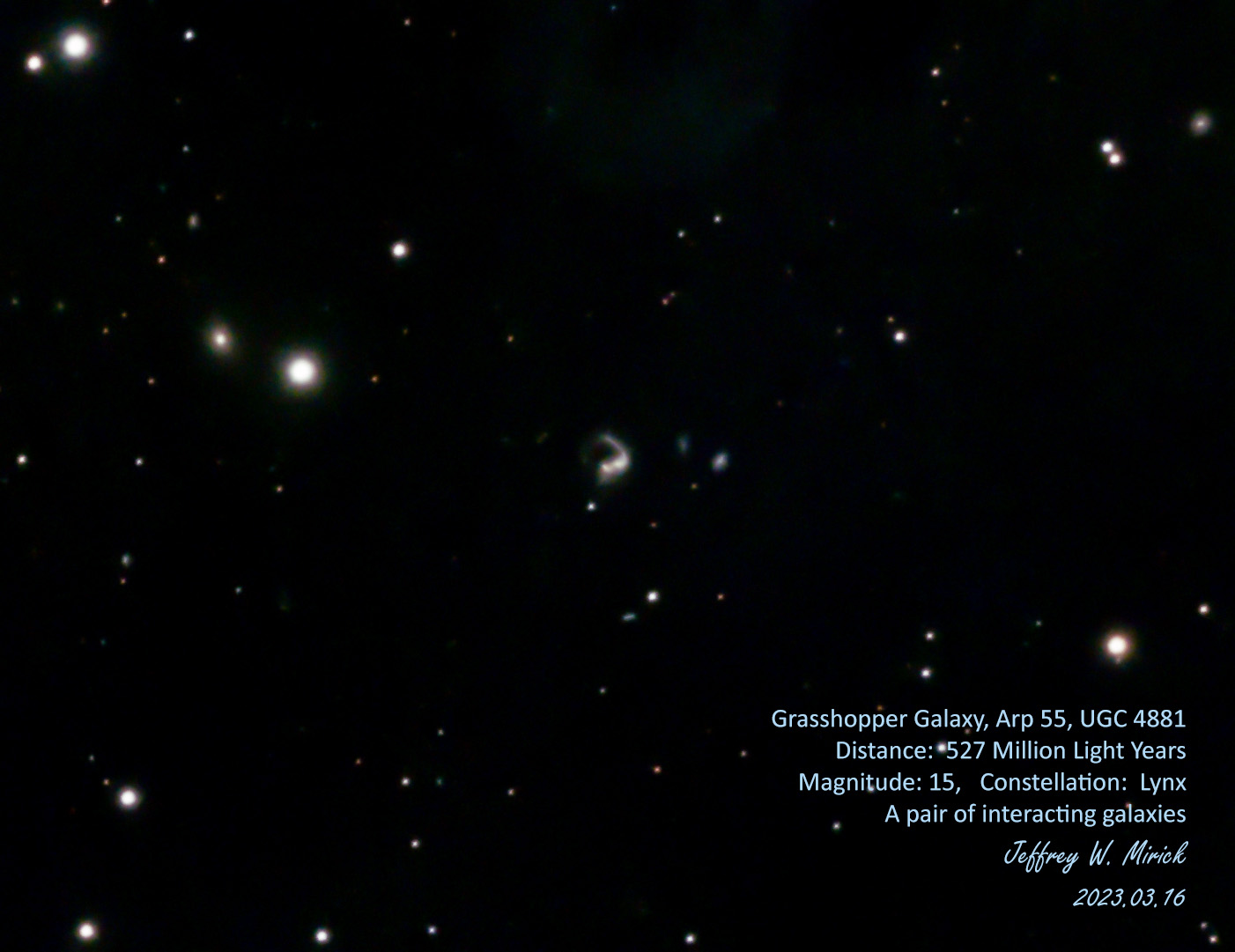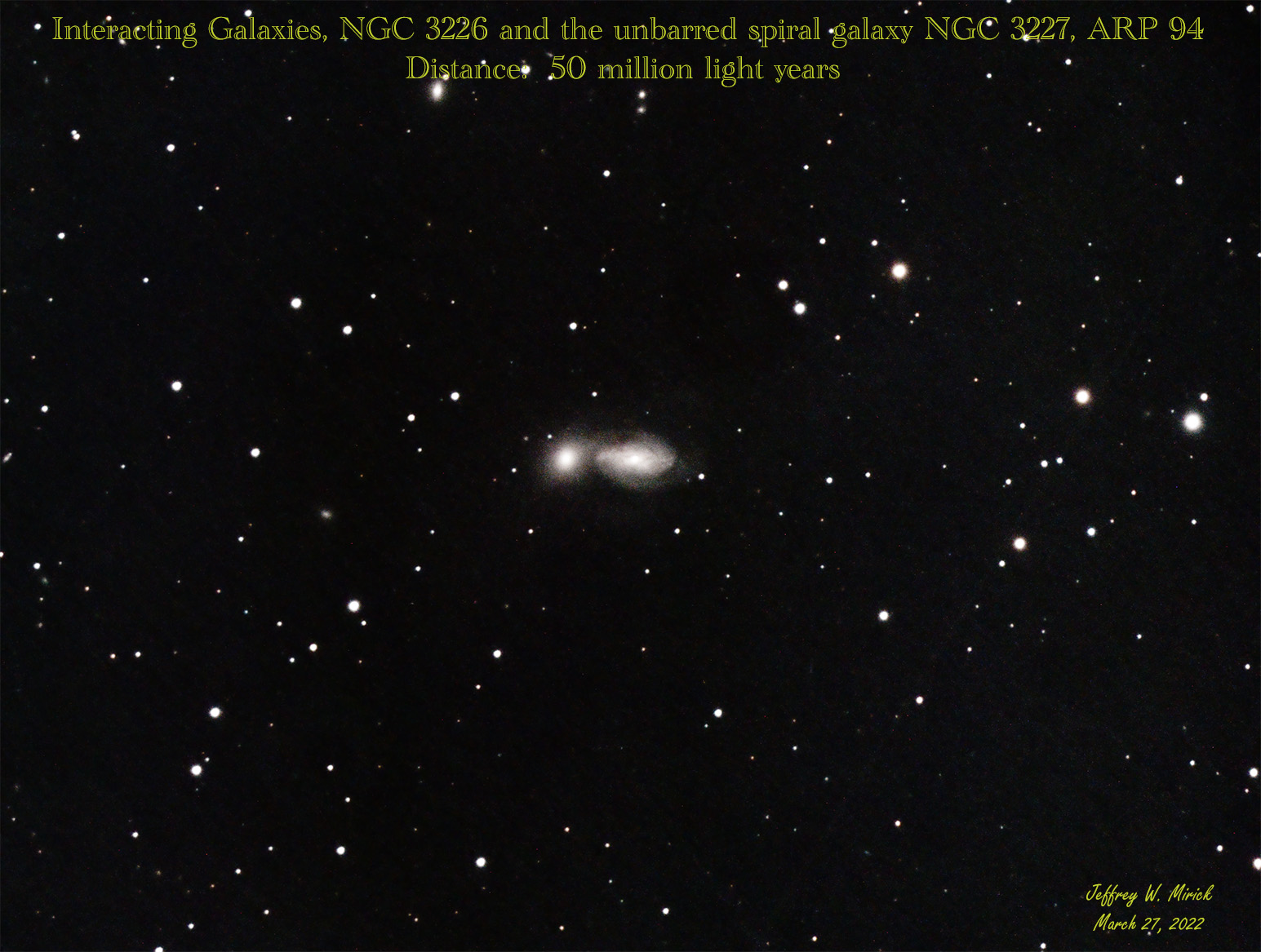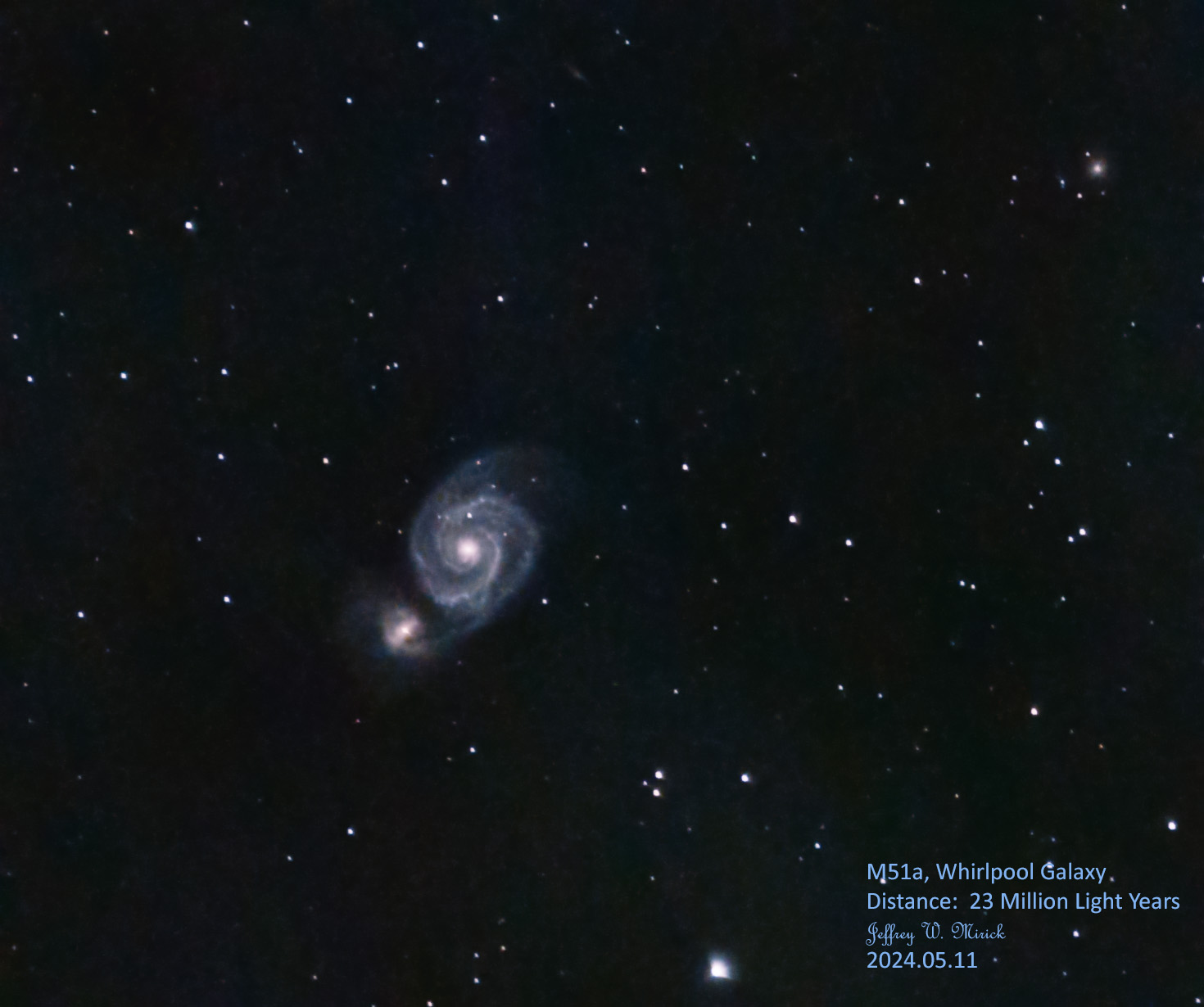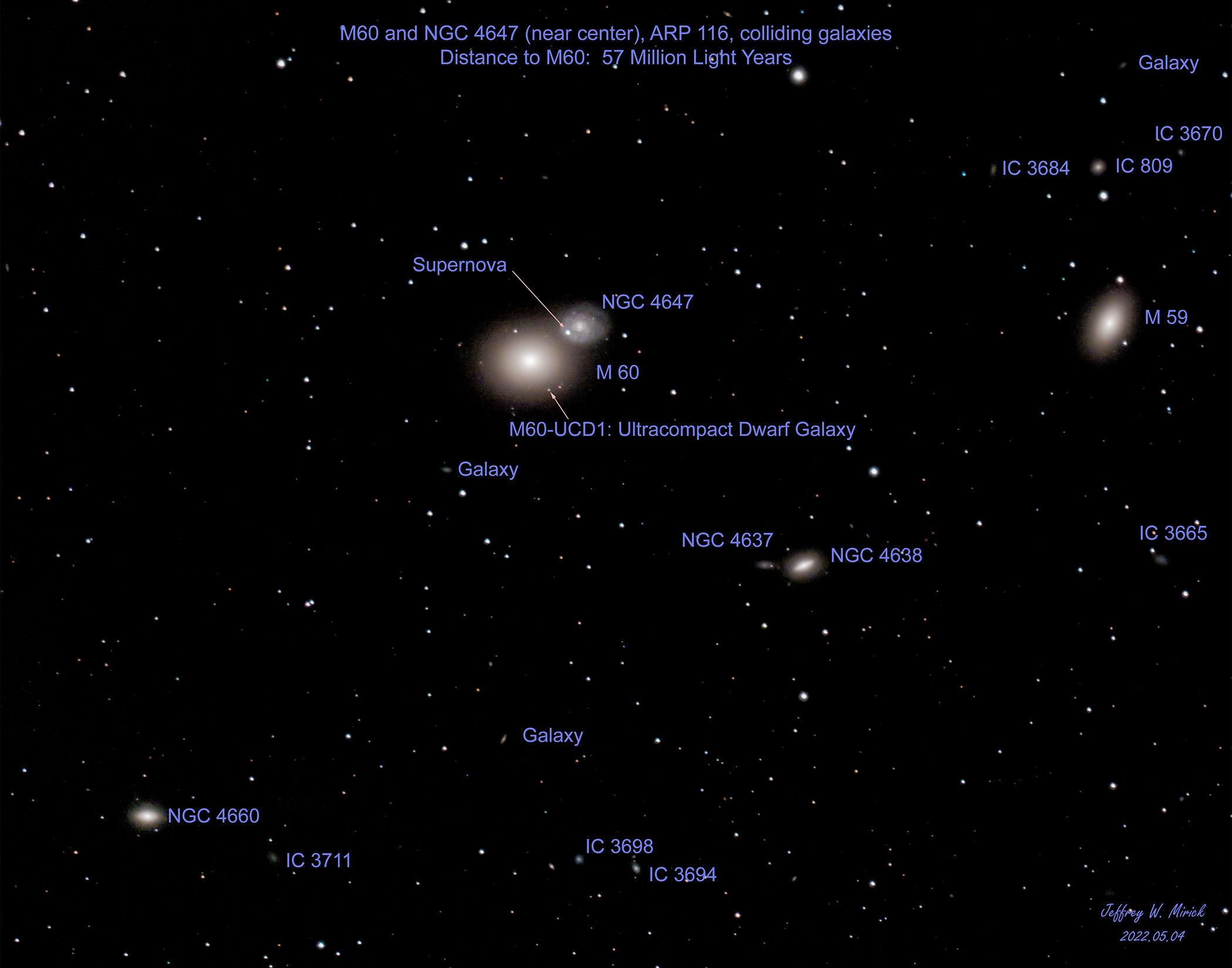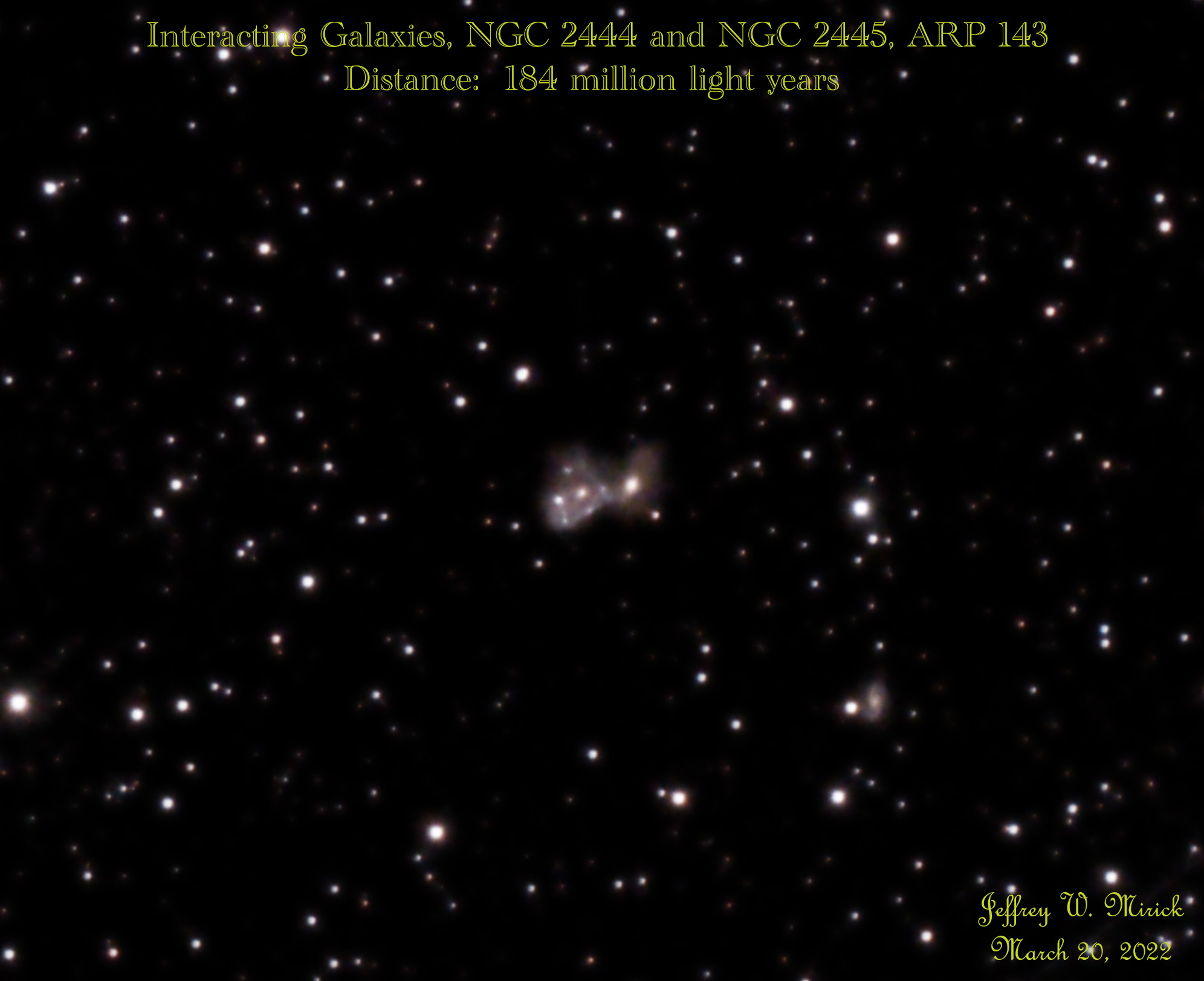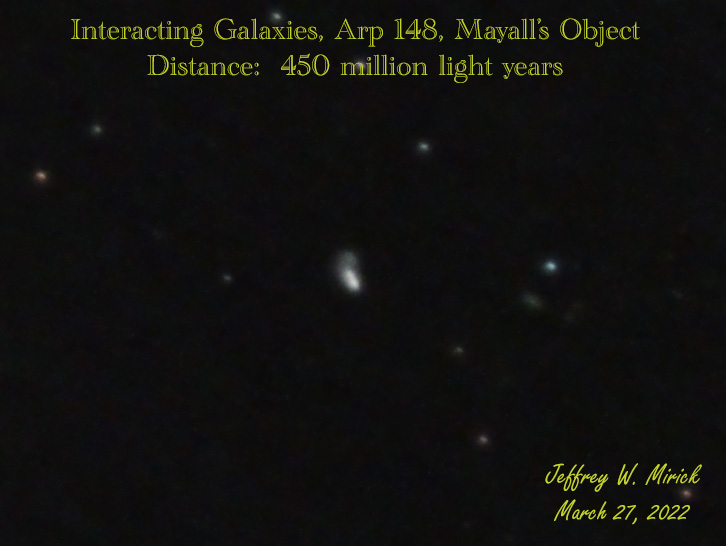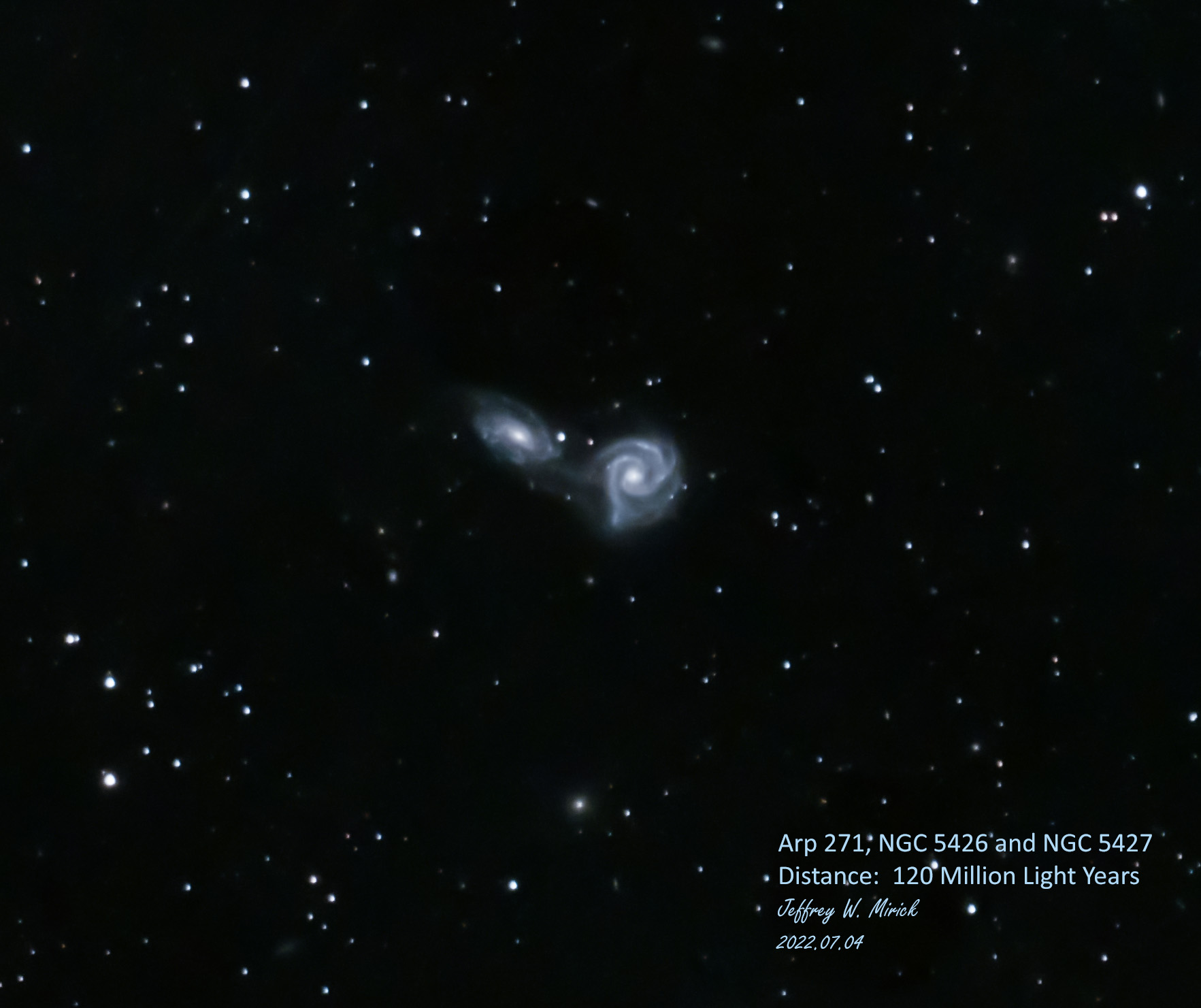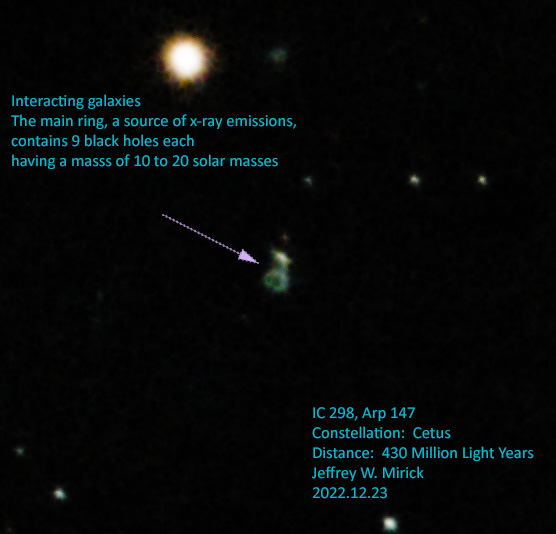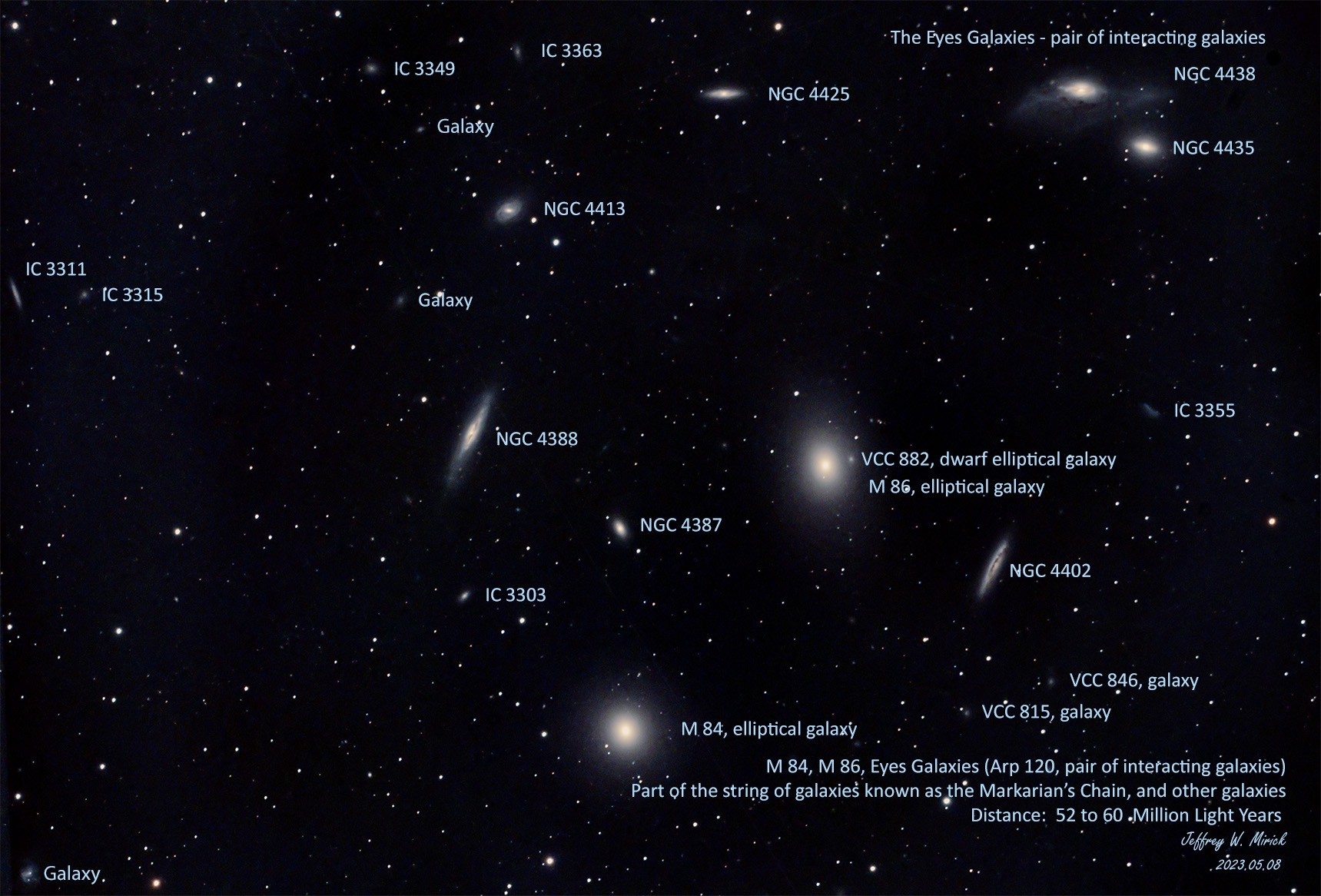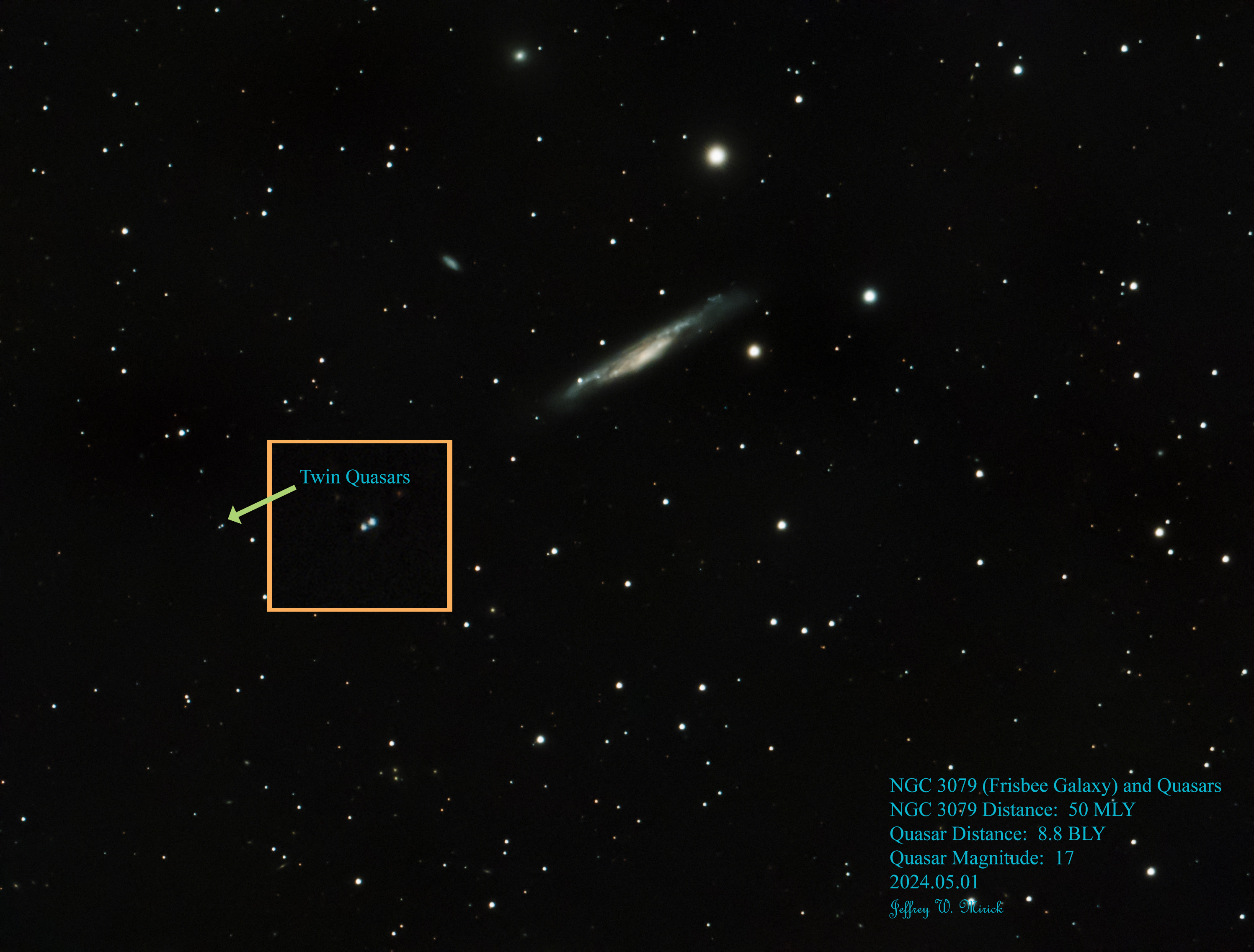Specs for images taken with a camera and lens:
Camera: Panasonic lumix DC-S5 Full Frame Camera - 26MB
Lens: 70-200 mm, F2.8 lens
Temperature: Room temperature
Star Tracking: The camera was mounted on the
Sky-Watcher Star Adventure to track the stars across the sky.
Mount: The Sky Watcher (and camera) was mounted on a camera mount
capable of holding the weight of the Star tracker, camera, and lens.
Stacked images: 80 to 120 images were stacked to reduce the noise using PixInsight.
|
Specs for taking images using a telescope:
Telescope: Orion 190 mm (7.5 inches) F5.6 Maksutov-Newtonian (Mak-Newt) Astrogrraph Telescope
Mount: Orion Atlas II, EQ-G Computerized Goto Mount
Camera: Orion cooled CMOS 26 MB G26 camera
Temperature: Camera was cooled to 0 C
Filter: SkyGlow Broadband Filter - Light pollution filter
|

|
